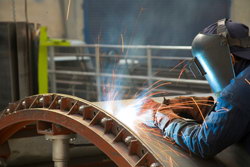Novel system for high-tech welding at low cost
Many industries rely on strong and durable metal components for their machines, systems and end products. To achieve various shapes and sizes, metals and metal alloys in thin sheets or slightly thicker plates are welded together. One of the most commonly used and well known joining processes is arc welding in which an electric arc melts the metals at their joint. Friction stir welding (FSW) is a relatively new technique. It uses a rotating pin tool that generates frictional heating combined with high forging pressure to soften, stir and form a uniform joint between two pieces of metal that remain in solid phase. FSW has been particularly applicable to difficult-to-weld materials such as aluminium and is successfully used to produce light-weight, strong, reliable and recyclable products. It is also safer and more environmentally friendly that conventional arc welding. In fact, the technique has become the National Aeronautics and Space Administration’s (NASA) method of choice for manufacture of aerospace components including those on the Space Shuttle. As is often the case, its widespread implementation in industry is prohibited by capital cost. EU funding of the ‘Development of a low cost processing unit for friction stir welding’ (Lostir) project enabled European scientists to integrate special tools and monitoring software with milling machines to facilitate low-cost FSW. In addition to development of FSW tools compatible with milling machine operating constraints, scientists developed a low-cost FSW monitoring unit. The sensor monitored horizontal forces and torque on the tool and communicated with a lap-top via two-way wireless digital telemetry. Labview software enabled real-time monitoring, event marking and automatic detection of weld parameters unacceptable for satisfactory welding. Field tests by partners were met with enthusiasm. The Lostir system provided significant benefits to manufacturers that could have important positive impact on their business. Lostir may just help companies use the welding technology NASA does for its space programme to build your next car.







